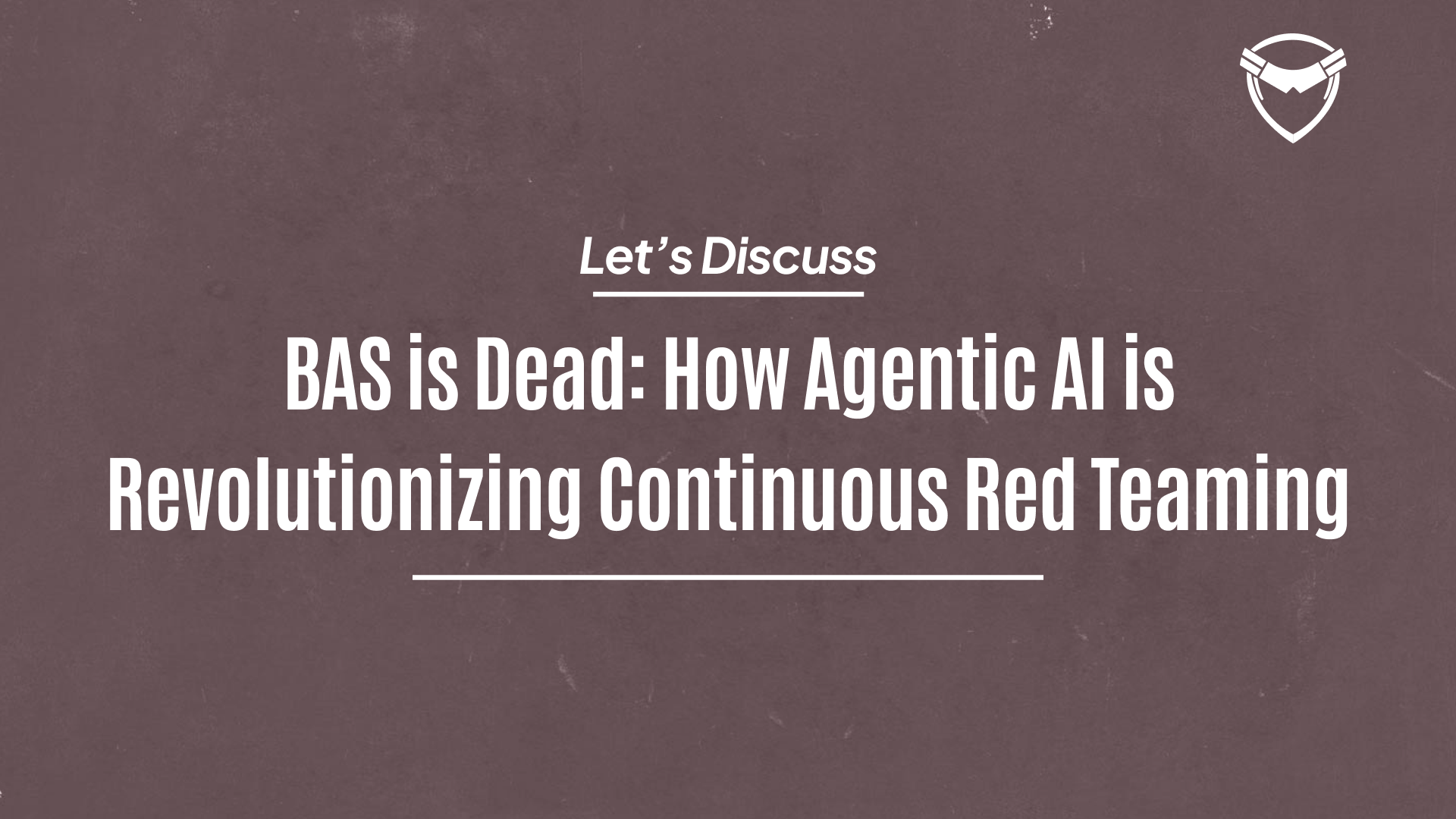The cybersecurity battleground is shifting dramatically. The static, scripted nature of traditional Breach and Attack Simulation (BAS) platforms is no longer enough to contend with the ever-adaptive tactics of modern adversaries. In this post, we delve deeper into why BAS platforms have met their end, how red teaming has evolved, and how AI agents are orchestrating comprehensive, contextualized red team exercises for organizations.

Red teaming has long been the gold standard for testing an organization's security posture by emulating adversary tactics. Traditional red teaming typically involves scheduled engagements with predetermined goals, often constrained by limited scope and manual execution. While these exercises have historically provided valuable insights, they come with inherent limitations:
Agentic AI is transforming the red teaming process by addressing these limitations head-on. By integrating continuous learning, real-time data, and automated orchestration, AI agents are redefining what it means to simulate adversary behavior in a modern organization.
One of the biggest advantages of AI-driven red teaming is the ability to contextualize attacks:
Agentic AI doesn’t just simulate attacks—it orchestrates a comprehensive red teaming campaign across an organization:
Organizations that adopt AI-driven red teaming benefit from a holistic and proactive approach to security:
Among the cutting-edge solutions, Pentest Copilot stands out. It exemplifies how AI agents can elevate red teaming through:
Imagine an organization facing a rapidly evolving cyber threat landscape—while traditional BAS platforms might simulate a dated phishing campaign, an AI-powered red team could execute a multi-layered assault that includes spear phishing, lateral movement, and data exfiltration in real time. This level of sophistication ensures that organizations are not just defending against known threats, but are prepared for the unknown.
The evolution of red teaming through Agentic AI represents a paradigm shift for cybersecurity. As traditional BAS platforms fade into history, the future lies in continuous, context-aware red team operations that adapt and evolve with the threat landscape. By embracing AI agents, organizations can ensure that their security posture is tested against the most current, relevant, and sophisticated threats.
Are you ready to upgrade your red teaming strategy? With AI-driven orchestration and contextualized simulations, the future of cybersecurity is not just about reacting to threats—it’s about anticipating them. Embrace the power of Agentic AI and let your red team lead the charge in a dynamic, ever-changing cyber battlefield.
Written by a seasoned cybersecurity expert with extensive experience in red teaming, penetration testing, and threat intelligence, this article is grounded in real-world insights and the latest industry advancements. For more technical resources and further reading, explore:
Stay ahead of the curve, and let AI-powered red teaming transform your approach to cybersecurity.
A: BAS platforms rely on static, pre-defined attack scenarios based on historical data. They often lack the agility to adapt to rapidly evolving threat landscapes, leaving organizations exposed to novel and sophisticated attacks. Their limited scope, high maintenance costs, and reactive nature make them less effective compared to dynamic, AI-driven solutions.
A: Agentic AI continuously learns from real-time threat intelligence and adapts its tactics dynamically. It provides context-aware simulations by considering an organization’s unique environment, automates reconnaissance and attack orchestration, and ensures continuous feedback loops to refine its strategies. This results in more realistic and comprehensive red team exercises.
A: Contextualization ensures that red team exercises are tailored to an organization’s specific vulnerabilities and current threat environment. By analyzing real-time data, AI agents can simulate attacks that mirror actual adversary tactics, prioritize high-risk vulnerabilities, and provide insights that are directly applicable to the organization's defense strategies.
A: Pentest Copilot leverages adaptive learning to update its attack methods in real time, integrates seamlessly with frameworks like MITRE ATT&CK, and automates routine tasks such as reconnaissance. Its modular architecture allows for the quick integration of new attack modules, ensuring that red teaming exercises remain relevant and comprehensive in the face of emerging threats.
A: Organizations benefit from enhanced visibility into their security posture, proactive identification and remediation of vulnerabilities, efficient resource allocation by reducing manual effort, and comprehensive reporting that integrates technical insights with actionable recommendations. This approach not only improves immediate defenses but also supports long-term security planning.